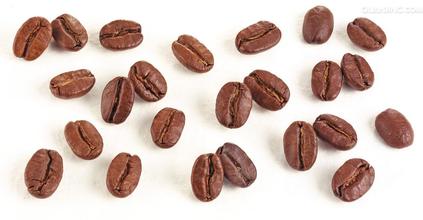Introduction to the environmental growth requirements of the characteristics of coffee beans in Brazil
Introduction to the environmental growth requirements of the characteristics of coffee beans in Brazil
Old bourbon coffee is grown on some estates in the Serrado district of Minas Greais state in southeastern Brazil. Old varieties of bourbon coffee grown on these estates, such as Capin Branco and Vista Allegre, are also sold on the market. Although they come from the same area, these coffees have their own characteristics. Capingblanco coffee is smoother than Vesta Allegre coffee, while Vesta Allegre coffee is strong and black, both of which have lower acidity. However, like all Brazilian coffee, they are most suitable for drinking when they are fresh and tender, because the older they are, the more acidic they are. These coffee growers have organized themselves into the Brazilian Special Coffee Association (the Speciality Coffee Association of Brazil).
Coffee is now cultivated in new places inland, thanks to natural benefits. Panama became famous after the war as a new coffee producer in Brazil, and because its natural conditions are not superior, it is still inferior in quality compared with that produced in Sao Paulo. Now in the northern part of the state of Sao Paulo, Lieberon, Bredo, and Franka, the interior of Mogianashi is the best producer of Brazilian coffee.
Characteristics: exported from the port of Sao Paulo in Sao Paulo, it is the highest grade of Brazilian coffee. Large, green or yellowish beans are usually used for blending.
High aroma, moderate bitterness, as well as sour taste of high-grade products, can also be drunk directly.
Including all coffee beans grown in Brazil, except for Santos, Brazilian beans are mostly "cheap and good" coffee. Can be used for mass production of comprehensive coffee beans, most of which are re-roasted. The main raw material of instant coffee is also Brazilian coffee beans. When the coffee bean germ is very fresh, it is artificially refined and naturally dried in the vulva for about 60-70 days, so that the sweetness of the pulp fully infiltrates into the bean. Features: coffee beans have a strong aroma, moderate bitterness, high texture acidity, soft overall taste, low acidity and endless aftertaste. The taste of Brazilian coffee has a low sour taste, with the sweet and bitter taste of coffee, the entrance is very smooth, but also with a hint of grass aroma, slightly bitter in the fragrance, smooth and smooth, with a pleasant aftertaste. There are no outstanding advantages for Brazilian coffee, but there are no obvious drawbacks, such as mild and smooth taste, low acidity and moderate mellow.

Important Notice :
前街咖啡 FrontStreet Coffee has moved to new addredd:
FrontStreet Coffee Address: 315,Donghua East Road,GuangZhou
Tel:020 38364473
- Prev

Flavor description of Yunnan Tiepi Katim Coffee beans
Flavor description of Yunnan Tippi Katim Coffee beans Typica: the oldest native variety in Ethiopia and southeastern Sudan, all Arabica are derived from Tibica. The flavor is elegant, but the physique is weak, the disease resistance is poor, the fruit yield is less. Jamaica Blue Mountain, Sumatra Manning, Hawaii Kona, etc.
- Next

Yunnan Bourbon Coffee Bean Flavor Description Grind Scale Variety Manor Region Introduction
Colombia is the largest harvest country of this new variety of katim, and directly after the improved katim to the national name of Colombia katim and kadura are their two main varieties, the ratio of about 6:4. These are my 2010 participation in the World Expo as a coffee consultant for Costa Rica.
Related
- Detailed explanation of Jadeite planting Land in Panamanian Jadeite Manor introduction to the grading system of Jadeite competitive bidding, Red bid, Green bid and Rose Summer
- Story of Coffee planting in Brenka region of Costa Rica Stonehenge Manor anaerobic heavy honey treatment of flavor mouth
- What's on the barrel of Blue Mountain Coffee beans?
- Can American coffee also pull flowers? How to use hot American style to pull out a good-looking pattern?
- Can you make a cold extract with coffee beans? What is the right proportion for cold-extracted coffee formula?
- Indonesian PWN Gold Mandrine Coffee Origin Features Flavor How to Chong? Mandolin coffee is American.
- A brief introduction to the flavor characteristics of Brazilian yellow bourbon coffee beans
- What is the effect of different water quality on the flavor of cold-extracted coffee? What kind of water is best for brewing coffee?
- Why do you think of Rose Summer whenever you mention Panamanian coffee?
- Introduction to the characteristics of authentic blue mountain coffee bean producing areas? What is the CIB Coffee Authority in Jamaica?

